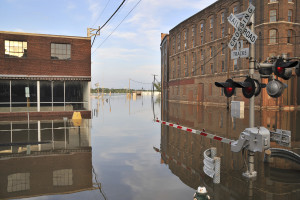The New Norm: A Storm for Every Season
The mid November tornadoes that ripped through the Midwest last week were a stark reminder of the likelihood of encountering at least one disaster that threatens ones well-being and destroys homes and property. While no one can prepare for the emotional toll these disasters take on those affected, with some planning; the financial impact from loss of property can be minimized or even eliminated.
Foremost is maintaining adequate homeowners’ insurance. Is the amount of dwelling coverage adequate? Are there replacement costs, and what is the amount and character of the temporary living coverage? How much coverage is provided for the contents of the home, including electronics, computers and expensive appliances? How much is the deductible? Keep in mind that many standard homeowners’ policies do not cover damage from certain perils, like flooding or wind damage from hurricanes.
In the aftermath of a disaster, a common concern for those with damaged or destroyed homes is the loss of family heirlooms, jewelry, and of course irreplaceable photos and family treasures. Typically, there is little or no coverage through a homeowners’ policy for these items; so it is important to take steps in advance to protect those items.
Many choose to keep their valuables locked up tight at home in their personal safe, and while it is a step up from having no protection, home safes are more susceptible to damage, destruction, or loss in a catastrophic event. After the tornado that hit Moore, Oklahoma in 2013, residents were left rummaging through thousands of pounds of debris in search of their home safes, racing to beat looters that were also in search of their valuables. There were also similar reports following Super Storm Sandy last fall. So while a good start, a home safe certainly has some risk. It is also an expensive option, because the safe needs to be affixed to a concrete slab or basement and needs to be water and fire proof (as opposed to fire and water resistant) to withstand these disasters, which means it will cost in excess of $500 for even the smallest safe.
Another option is a safe deposit box at a local financial institution. While less convenient than a home safe, it gives more protection against disasters and potential theft, because it is stored in a secure vault at a monitored institution. It is also more affordable, with a standard 3×5 box costing about $20-$35 a year in most parts of the country. According to Daniel Dyke at KeyBank, “A safe deposit box could save customers a lot of heartache if their homes were destroyed in a natural disaster.” For the money, safe deposit boxes represent one of the best value services available from a financial institution.
Unfortunately, financial institutions are not immune to the damage or destruction inflicted by Mother Nature. The recent tornado in central Illinois destroyed a bank vault, and numerous banks were flooded following Sandy last year, damaging and destroying property in the safe deposit boxes. Yet, “it is still safer than leaving things at home,” says Tish Scott, SVP for Insignia Bank.
Until recently, most banks did not insure the contents of safe deposit boxes. Today over 300 banks countrywide offer an insured box option which covers family heirlooms, jewelry, cash, and all other property placed in the box. The coverage also provides $3,000 of benefits to help defray the cost of replacing important documents, such as: wills, trusts, and deeds, or for restoring those irreplaceable photos kept in the box. The additional cost for an insured box starts around $25. With this feature, a safe deposit box not only provides the best environment to protect against disasters, it allows property that would otherwise be uninsurable to be insured. With advance warning of a flood or hurricane, an insured box becomes a useful tool where valuable property and photos can be taken and placed in the insured box.
Whether it is a home safe or an insured safe deposit box, the key is preparation to minimize the financial and emotional loss that can occur when a disaster strikes.
Not all financial institutions offer an insured box, so check with your bank or credit union. More information on leasing an insured box can be found at www.insuremybox.com.
